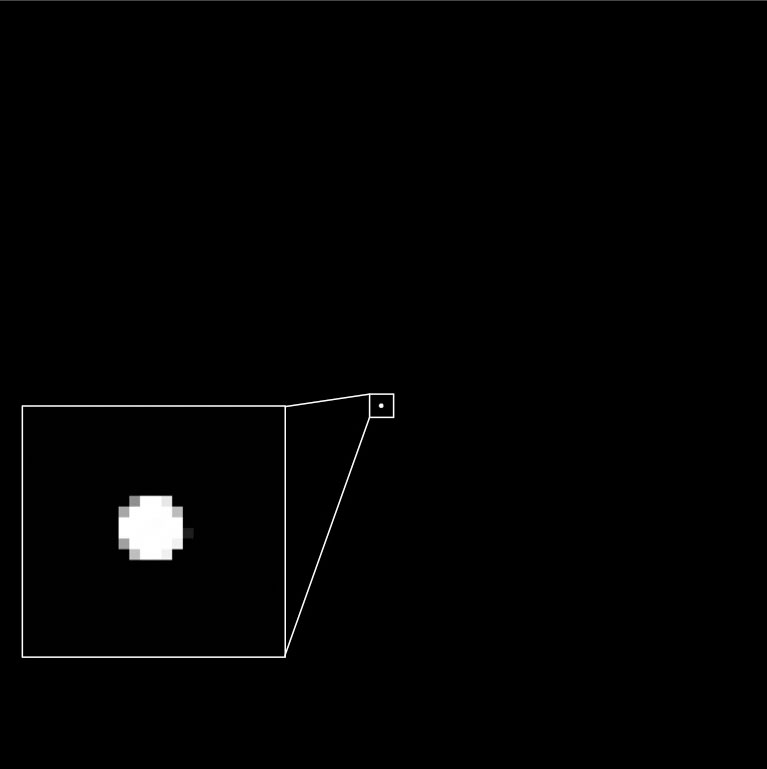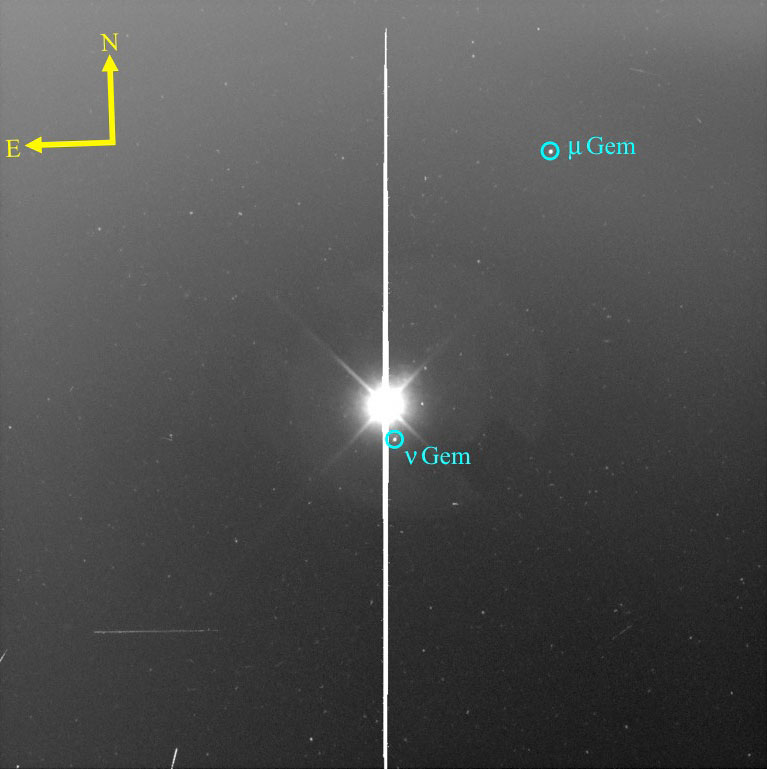
A Japanese asteroid-sampling spacecraft has its target in sight.
The Hayabusa2 probe has photographed Ryugu, the space rock it's scheduled to start orbiting late this month.
One newly released image, which was captured on Sunday (June 10) by Hayabusa2's Optical Navigation Camera-Telescopic (ONC-T), shows the 3,000-foot-wide (900 meters) Ryugu shining like a star against the blackness of space. [Photos: Japan's Hayabusa2 Asteroid Mission in Pictures]
Another Sunday ONC-T shot, which featured a much shorter exposure time (0.09 seconds versus 178 seconds), suggests that the asteroid is not significantly elongated, Japan Aerospace Exploration Agency (JAXA) officials said.

The Sunday photos were taken when Hayabusa2 was about 930 miles (1,500 kilometers) from Ryugu. Last week, JAXA released a few ONC-T images taken on June 6, when the probe was 1,615 miles (2,600 km) from the space rock.
Hayabusa2, which launched in December 2014, is scheduled to arrive at Ryugu on or around June 27. At that time, the probe will begin orbiting the asteroid at an altitude of about 12 miles (20 km), JAXA officials have said.
Hayabusa2 will then start prepping for a series of complex, up-close studies of the space rock. If all goes according to plan, over the ensuing 12 months, the spacecraft will deploy three rovers and a lander on Ryugu's surface, gouge out a small crater using an explosives-bearing impactor, and collect samples from the newly created crater.
Get the Space.com Newsletter
Breaking space news, the latest updates on rocket launches, skywatching events and more!
The spacecraft will depart Ryugu in November or December 2019, and its collected samples will come back to Earth in a special return capsule in late 2020.
Hayabusa2 is Japan's second asteroid-sampling mission. The original Hayabusa made history by returning tiny bits of the asteroid Itokawa to Earth in 2010. Itokawa is a stony, or S-type, asteroid, whereas Ryugu is a C-type (carbonaceous) rock — the kind that many scientists think may have delivered life's building blocks to Earth in long-ago impacts.
"By exploring a C-type asteroid, which is rich in water and organic materials, we will clarify interactions between the building blocks of Earth and the evolution of its oceans and life, thereby developing solar system science," JAXA officials wrote in a Hayabusa2 mission update last week.
NASA is also working to return samples of a carbonaceous asteroid to Earth. The agency's OSIRIS-REx probe is scheduled to arrive at the 1,650-foot-wide (500 m) space rock Bennu this August, then snag samples about two years later. This asteroid material will make it back to Earth in September 2023.
Follow Mike Wall on Twitter @michaeldwall and Google+. Follow us @Spacedotcom, Facebook or Google+. Originally published on Space.com.
Join our Space Forums to keep talking space on the latest missions, night sky and more! And if you have a news tip, correction or comment, let us know at: community@space.com.

Michael Wall is a Senior Space Writer with Space.com and joined the team in 2010. He primarily covers exoplanets, spaceflight and military space, but has been known to dabble in the space art beat. His book about the search for alien life, "Out There," was published on Nov. 13, 2018. Before becoming a science writer, Michael worked as a herpetologist and wildlife biologist. He has a Ph.D. in evolutionary biology from the University of Sydney, Australia, a bachelor's degree from the University of Arizona, and a graduate certificate in science writing from the University of California, Santa Cruz. To find out what his latest project is, you can follow Michael on Twitter.









